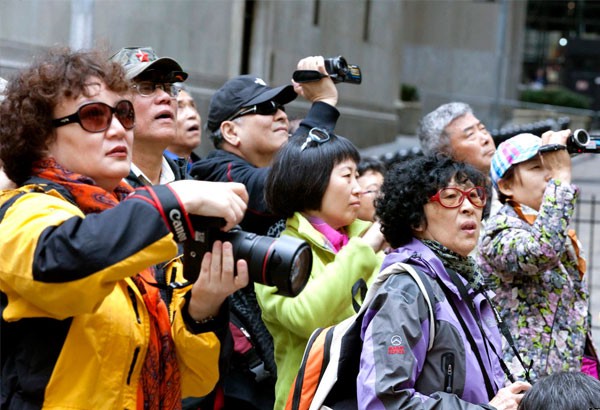
Globe, Alipay, and the Chinese Tourist Trap
By Luis Buenaventura for Fintech Hong Kong
One weeks ago, Globe Telecommunications announced a new capital infusion from Jack Ma’s Ant Financial and Ayala Corporation into its Globe Fintech Innovations subsidiary (officially, Mynt).
Mynt launched in late 2015 as a sort of revamped and consolidated version of GCash and its microlending sibling Fuse Lending. It seemed like Globe was playing the classic catch-up game — just three months before, Smart had launched its new Paymaya platform, itself a revamped version of that old chestnut, Smart Money. (See my thoughts on Paymaya here.) A year has now passed and it seems Ernest Cu’s real plan has finally revealed itself, and it’s a bit of a whopper.
As its most well-known personality, Jack Ma and his conglomerate have become something of an avatar for the rapidly expanding Chinese empire. Just last month, Ant Financial announced that it was acquiring Moneygram, the second largest money transfer company in the world. Ant also notably owns Alipay, a third-party payment services provider that is of course at the heart of this entire partnership with Mynt.
Why is Alipay and Ant Financial important to Globe?
Well, it’s the comprehensive digital finance platform that every business in the space aspires to become. Or, at the very least, aspires to partner with. In 2015, Ant made a $680 million investment in PayTM that enabled the Indian payments company to grow its customerbase by an unprecedented 100 million users in a year’s time.
Alipay is the world’s leading payments provider, and over the past 13 years has grown to become almost comically massive in its home country. Consider that, at 450 million users, Alipay maintains a database of identities and purchasing history that is larger than the combined resident populations of the Philippines, Indonesia, and Vietnam. Each day, it processes 175 million transactions, a number that is roughly equal to the daily figures of Visa globally.

The Alipay Wallet and the Wirecard POS in Europe. Source: Medium.com
Its Alipay Wallet service has over 190 million active users, and is deeply integrated into everything in China from department stores to taxis to social security to hospitals. (Alipay Wallet is the mobile payments arm of the parent Alipay, and is probably the closest analogue to what Mynt is developing locally.)
Outside of China, Alipay Wallet’s strategy focuses on onboarding overseas merchants wherever Chinese tourists are likely to shop. With enough participating merchants around the world, the average Alipay user can theoretically travel without using money changers, or for that matter, without ever needing to withdraw their funds from the Alipay system.
Alipay Wallet’s expansion strategy mirrors the tourism patterns of some 109 million mainland Chinese as they gallivant across the planet.
It began expanding outwards in 2013 to Hong Kong and Taiwan. By 2015, it had reached South Korea, and in 2016, it began rolling out in Europe.
With Pres. Duterte’s visit to Beijing late last year reportedly triggering a 3x increase in Philippine visa applications amongst Chinese citizens, it seems reasonable to infer that the Ant Financial investment in Mynt has this same “travel wallet” strategy in mind for the Philippine destination. Alipay would obviously have a lot of technical expertise to share with Globe and Mynt, but Ayala Corp’s retail properties may be more core to this deal than is immediately apparent.
The expected 1 million Chinese visitors would potentially spend over a billion USD in the Philippines this year. It’s not hard to see why China wields its tourist population as a diplomatic weapon.

109 million Chinese tourists spent over $220 billion overseas in 2015. Source: AP Photo
What’s perhaps most fascinating about Alipay’s global strategy is that it does not appear to be very interested in acquiring non-Chinese customers. Their primary focus is purely on providing a homogeneous payments experience to mainlanders. Granted, that’s a market with 1.35 billion potential customers, but it’s a stark contrast with expansion strategies of say, Facebook or Uber, both of which are heavily dependent on localization. Such is the advantage of catering to the largest population slice in the world.
Last year, Alipay announced that it hoped to have 2 billion users on its platform within the next 5–10 years.
It wasn’t clear if they were going to start offering the Alipay wallet directly to other countries, or if they simply expected that there would be 2 billion Chinese people alive by then.
First appeared at Fintech Hong Kong





